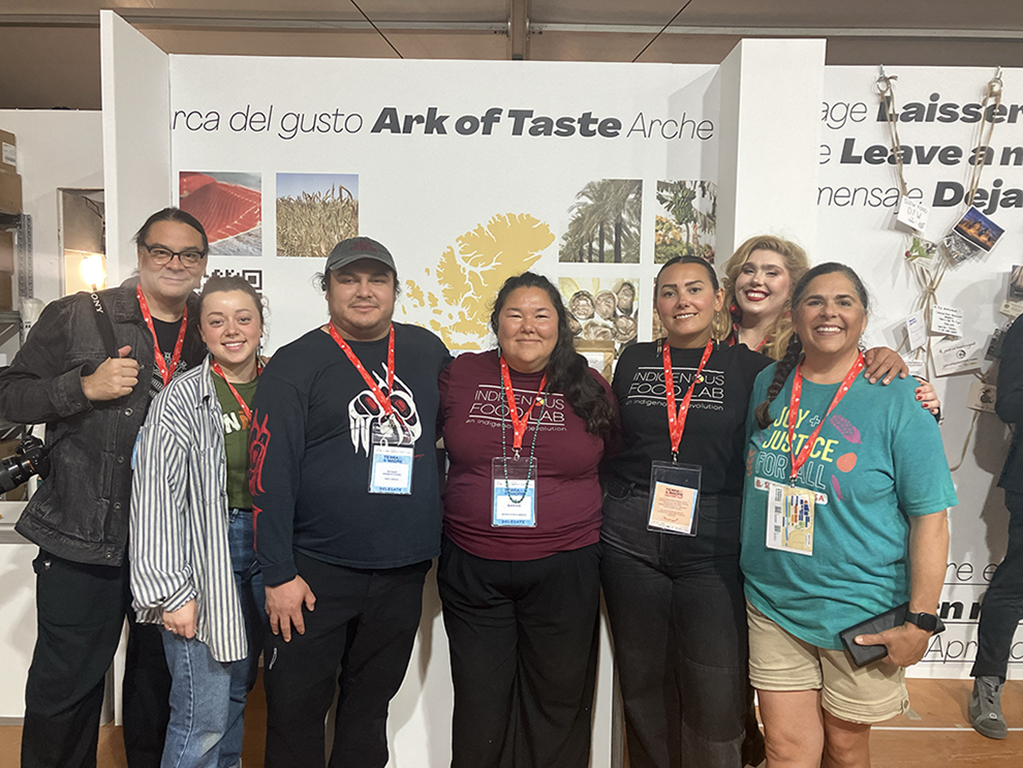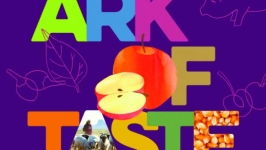Dishing it out in Italy
Slow Food is a global grassroots organization founded in Italy in 1986 to resist the disappearance of local food cultures and traditions through the connection of vast food communities around the world. What began as a protest against a fast-food chain opening near the Spanish Steps in Rome—where protesters shared bowls of penne pasta and chanted “We don’t want fast food. We want slow food!”—the movement has since blossomed into a global presence with chapters in over 160 countries including 80 chapters in the United States.
Slow Food’s Terra Madre gathering, held every two years in Turin, Italy, is a vibrant celebration of sustainable food practices, bringing together farmers, herders, fishers, producers, chefs, educators, food activists and experts from around the globe. The event focuses on biodiversity, emphasizing the importance of preserving regional food traditions and protecting local ecosystems.
Since 2004, the event has proven to be a dynamic space for learning, exchanging ideas, working towards solutions and building relationships among delegates, partners and organizations. This year, 3,000 delegates from 120 countries came together to engage in discussions, networking, workshops, a marketplace and tastings from around the world highlighting the rich diversity of food cultures. With a strong emphasis on community and collaboration, the Terra Madre event inspires individuals to embrace local foods and sustainable practices, echoing the Slow Food philosophy of good, clean and fair food for all.
Slow Food Phoenix Board Member Amber Sampson, professional chef and cultural anthropologist, was selected by Slow Food USA to represent the Phoenix chapter as a delegate at Terra Madre in September. Here she shares her experience at the convening, of which she jokingly says, “Terra Madre is the food Olympics, but instead of competing we are eating together.”
EDIBLE PHOENIX: Please tell us about the group of folks who represented Arizona at Terra Madre this year.
AMBER SAMPSON: I was joined by Slow Food USA representative Ian McFaul, who is an incredible leader for Slow Food at the state, regional and local levels. Ian is devoted to protecting and preserving biodiversity and being in relationship with who and where food comes from. We gave a lecture for Slow Food North America, representing Slow Food Phoenix, with food samples featuring “Sonoran Desert Native and Desert-Adapted Foods.”
Roy Kady rounded out our Arizona team as the representative for Slow Food Turtle Island. Kady is a sheep herder and fiber artist whose work centers around Navajo-Churro Sheep. In 2006, Kady, along with Jay Begay Jr. and Colleen Biakeddy, founded the Navajo-Churro Sheep Presidium to help support shepherds—both on and off the Navajo Nation—who wish to market their lambs and Churro products, including pelts, wool and meat. Roy traveled with apprentices Eliseo Curley, Kevin Aspass and videographer John Hosteen. During their presentation they served beautifully made Navajo-Churro sheep jerky dusted in chokecherry, a corn and bean medley, blue corn with apricot jam pancakes while speaking of ways that “Sheep Is Life.” Roy brought his apprentices and his traditional ecological knowledge to Italy, leaving people with a better understanding and respect for Arizona’s traditional foodways.
EP: How and why did you all choose the foods that you took with you?
AS: Arizona is home to the oldest history of agriculture in the United States, with over 4,000 years of documented agricultural history thanks to archeologist Jonathan Mabry. Many of these foods are reflected in the Slow Food Ark of Taste [a roster of endangered foods] due to the pressure of the industrial food system and the standardization of diets.
We served Greenthread tea, Black Sphinx dates, chiltepin pepper, cholla cactus buds, Navajo-Churro sheep along with mesquite flour from our Tohono O’odham friends at San Xavier Co-Op Farm and Oatman Farms; prickly pear fruit, tepary beans from Ramona Farms and White Sonoran wheat crackers from Hayden Flour Mill. All well-founded examples of Arizona’s local, heritage and native foods which have been specially adapted to the Sonoran desert we call home. These foods, along with the Navajo-Churro Sheep presentation from Roy Kady and his apprentices, reflected the biodiversity and exceptional power of investing in the people, communities and cultures who have stewarded Arizona’s local foods.
EP: As you interacted with people from across the globe who are part of the Slow Food movement, what particular similarities and differences struck you?
AS: One of my favorite moments from Terra Madre was when I joined the Cooks’ Alliance dinner. The delegates from around the world who happened to have a culinary background—chefs, restaurateurs and food producers—were all gathered for a group dinner. We each were instructed to bring a special ingredient reflecting our homeland. I elected to bring some cholla buds, which I honorably harvested last year and cleaned on a mesquite fire. I wanted my colleagues to experience the smoky sweet smell of mesquite and understand the awe that cholla buds bring, picked wild from Sonoran desert cactus, and when dried correctly can be saved for over 10 years.
Atsushi Nakahigashi, chef and culinary director of One Rice One Soup, based in Kyoto, Japan, brought wild foraged seaweed. He explained that this rare, special variety from Noto, Japan, was picked by hand before an earthquake last January. It was plenty salty and chewy, but when hydrated it became almost creamy. Other delegates, from the Philippines, had me celebrating with their Ube Cream Liqueur, and a fiery DJ set, while the team from Ukraine—all women—pulled at my heartstrings while we discussed the sobering reality of farming and maintaining your food supply while many men were off at war.
I was touched, and renewed by the global connection we all share. At one point in the Cooks’ Alliance dinner ingredients were spread over tables and languages flew around the room with colorful vibrancy as people used any communication style possible¸—like fingers, gestures and good old-fashioned “give it a taste”—to explain their foods. I watched a delegate from Nigeria spoon-feed another from halfway across the world; I relished in the joy food provides—as a universal language—connection and commonality for the support of local good, clean, fair food for all.
EP: What are ways that you dream of Arizona being represented at a future Terra Madre gathering?
AS: I dream of seeing a dinner at Terra Madre composed entirely of Arizona’s culinarians representing over 4,000 years of food history. Dishes, moving from pre-contact wild foods to foods like a white Sonora wheat bread with peach, orange and wine butter reduction, that bring into conversation the way Spanish missionaries colonized palates, forever changing Arizona’s food landscape. And dishes from Arizona’s modern gastronomy scene reflect the new wave of global diversity by those who call Arizona home.
Arizona’s food history is the epicenter of these impactful and important conversations, which are better had over a dinner.







